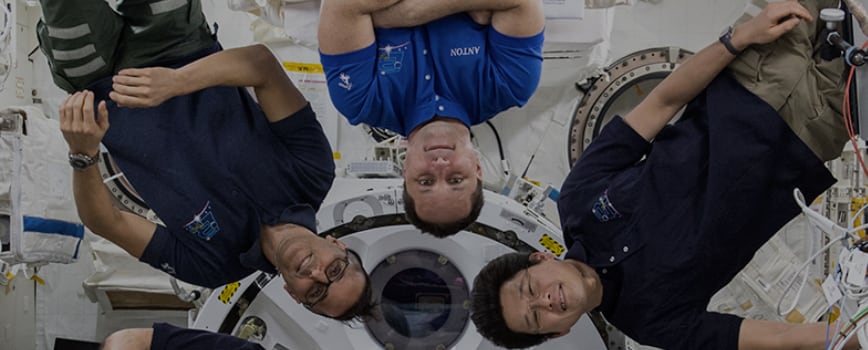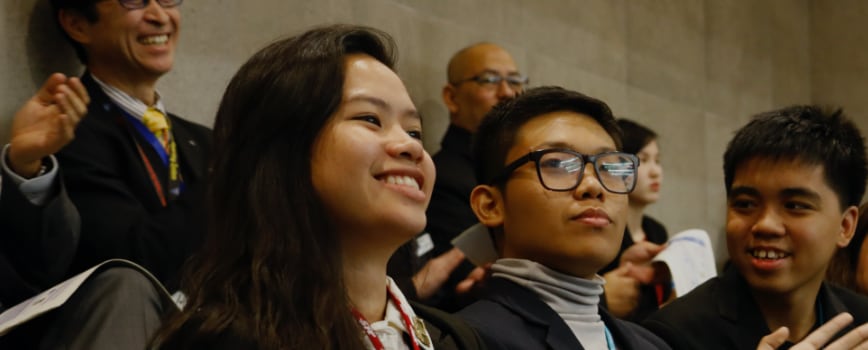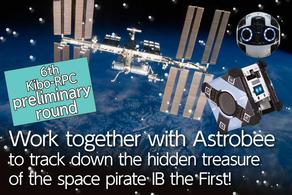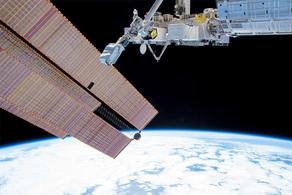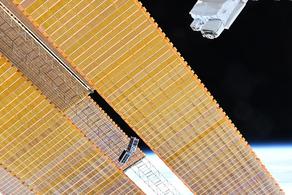2024.08.22
- Announcements
Asian Try Zero-G 2023 Wrap-Up Session was held!
- Experiment at Kibo
- Kibo Utilization Office for Asia (KUOA)
Overview
The Asian Try Zero-G (ATZ-G) 2023 Wrap-Up Session was held online on Sunday, June 9, 2024, where proposers of 11 simple physics experiment themes (Category A) and 5 exercise themes (Category B) reported on the results and discussions of experiments performed on orbit.
In addition to 54 participants from eight countries/region (Australia, Bangladesh, Indonesia, Japan, the Philippines, Singapore, Thailand, and Taiwan), Astronaut FURUKAWA, who conducted experiments on the ISS on February 13, 2024, also attended the meeting.
In addition to 54 participants from eight countries/region (Australia, Bangladesh, Indonesia, Japan, the Philippines, Singapore, Thailand, and Taiwan), Astronaut FURUKAWA, who conducted experiments on the ISS on February 13, 2024, also attended the meeting.


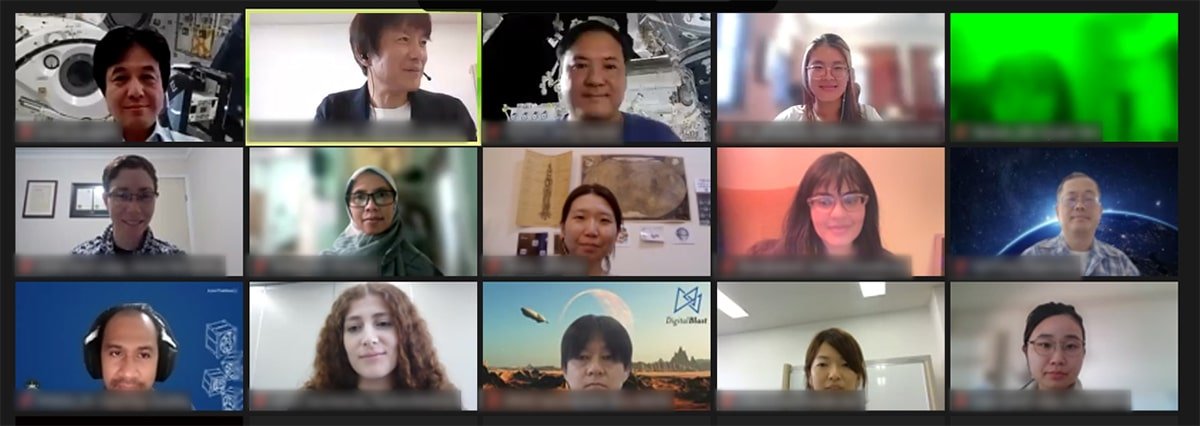
The meeting started with opening remarks by Dr. SHIRAKAWA, Director, JEM Utilization Center, JAXA, then presentations by the experiment proposers on how they compared the experiment results with their hypothesis by the Award Ceremony. At the end of the Session, Astronaut FURUKAWA gave closing remarks on the ATZ-G 2023 Wrap-Up Session.
Table 1: Program Schedule for the Day
| Program | Participant | |
| 1 | Opening | MC: MIYAGAWA Yayoi, Associate Senior Administrator, JEM Utilization Center, JAXA |
| 2 | Opening Remarks | Dr. SHIRAKAWA Masaki, Director, JEM Utilization Center, JAXA |
| 3 | Result Reports | Proposers of each theme |
| 【Category A】 | ||
| 1. Twist Athlete Robot Experiment | Australia | |
| 2. Stranger Things Two Ball on String | Thailand | |
| 3. Lato-Lato Motion Trials in Zero Gravity | Indonesia | |
| 4. Try a Total Elastic Collision in Space Using the Lato-Lato Game | Indonesia | |
| 5. Finding the Shape of Magnetic Field Lines | Bangladesh | |
| 6. Magnus Glider Looping Phase in Microgravity | Singapore | |
| 7. Behaviors of the Magnus Effect in Zero-Gravity | Taiwan | |
| 8. Water Spheres and Electrostatic Force | Thailand | |
| 9. Oloid's Movement in Microgravity | Philippines | |
| 10. Acceleration of Liquid Surface in Capillary Action in Microgravity | Japan | |
| 11. Zero-G Siphon | Singapore | |
| 【Category B】 | ||
| 12. Let Us Blow | Taiwan | |
| 13. Flexibility Exercises with Rope | Japan | |
| 14. The Effectivity of Elastic Resistance Band Exercise When Performed in Zero-Gravity | Philippines | |
| 15. Starfish Exercise for Microgravity | Thailand | |
| 16. Rubber Gymnastics on Air Chair | Japan | 4 | Q&A session | JAXA Astronaut FURUKAWA Satoshi |
| 5 | Award Ceremony | |
| ・Kibo-ABC Award | ・Presenter for Kibo-ABC Award Dr. Gay Jane P. Perez(PhilSA/ The Philippine Space Agency) |
|
| ・Crew Award | ・Presenter for Crew Award JAXA Astronaut FURUKAWA |
|
| 6 | Closing Remarks | JAXA Astronaut FURUKAWA |
Opening Remarks
Dr. SHIRAKAWA Masaki, Director, JEM Utilization Center, JAXA, opened the session with his remarks.

Result Reports
Category A:Simple Physics Experiments
1. Twist Athlete Robot Experiment (Australia)
The proposer observed how the acrylic stick moved when two forces were applied: the restoring force of the rubber binding the stick and the rotational force exerted by the astronaut while throwing the stick while rotating it. While the rotating motion could be observed longer on orbit than on the ground, the acrylic stick rotated faster than expected because of microgravity. Based on this experiment, the proposer discovered areas for improvement for the next experiment and understood the difficulty of conducting experiments in a microgravity environment.

2. Stranger Things Two Ball on String (Thailand)
The proposer team observed the movement of two balls when they were tied together with a string and rotated. The experiment results showed that both balls rotated slowly and rose as hypothesized by the proposers. On the other hand, instead of rotating on a plane as expected, the ball at the bottom was affected by the tension acting in the upward direction and rose faster than the ball in the middle. The proposer team considered that this phenomenon occurred because the ball at the bottom was under tension in the upward direction only, while the ball in the middle was under stress in the vertical direction, causing the ball at the bottom to rise faster than the ball in the middle.

3. Lato-Lato Motion Trials in Zero Gravity (Indonesia)
The proposer team verified whether Lato-Lato (a popular game among Indonesian children) can be performed on orbit. The experiment showed that spheres attached to the end of a string collided elastically even in microgravity. The proposer also considered that in a microgravity environment, the strength of the collision of the spheres would be smaller than on the ground.

4. Try a Total Elastic Collision in Space Using the Lato-Lato Game (Indonesia)
This proposal was also an experiment using Lato-Lato. The results of the experiment under microgravity indicated that it would be difficult to perform the stringed Lato-Lato continuously for a long period because the movement of the ball was irregular and unpredictable. On the other hand, the plastic Lato-Lato has a fixed distance from the ball and collides with it at a certain time, making it feasible even in a microgravity environment. The proposer also found that not only does the position of the hand during Lato-Lato have a significant effect on the experimental results, but also that Lato-Lato with the elbow extended is easier to perform than Lato-Lato with the elbow bent.
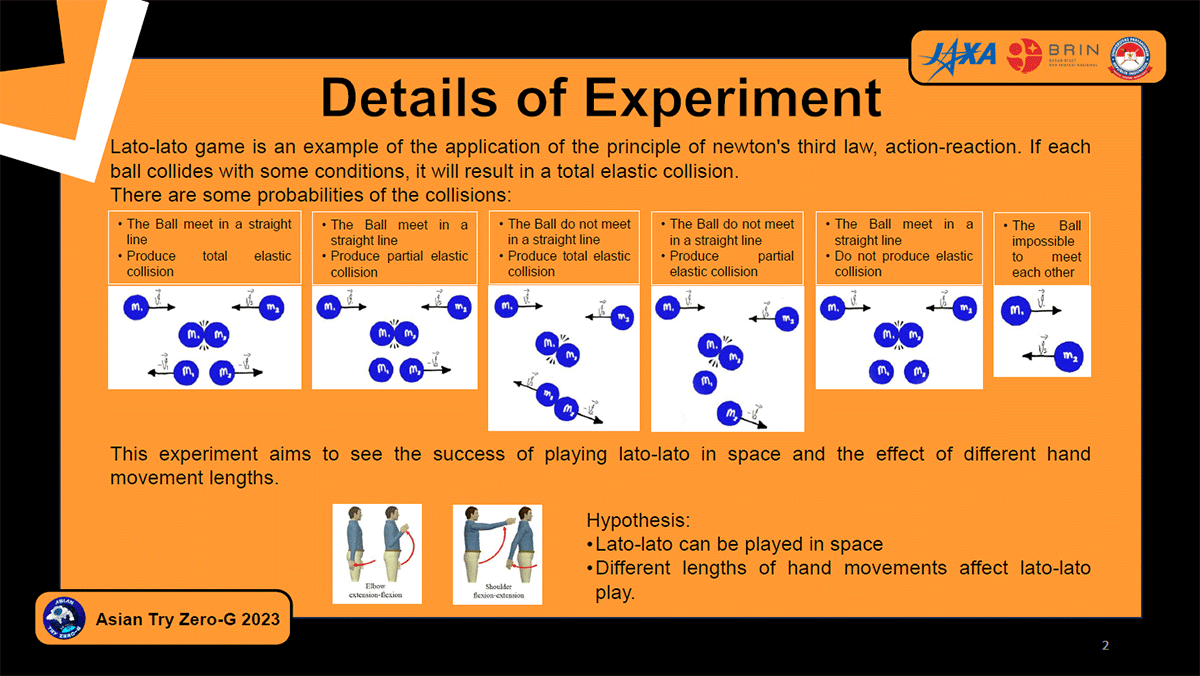
This on-orbit experiment was conducted in collaboration with the "3. Lato-Lato Motion Trials in Zero Gravity".
5. Finding the Shape of Magnetic Field Lines (Bangladesh)
This was an experiment to observe how magnetic chips visualize magnetic field lines on orbit. A magnet was inserted into the transparent box containing the magnetic chips and slowly rotated to observe the magnetic field lines. As a result, the chips were seen drawing magnetic field lines in three dimensions. Meanwhile, since the shape of the magnetic field lines did not change during the experiment, there are no effects on the magnetic field lines from external factors such as the magnetic field from celestial objects or plasma interaction. It is considered that this was because less influence from the interaction between the external magnetic field and the plasma on the ISS.
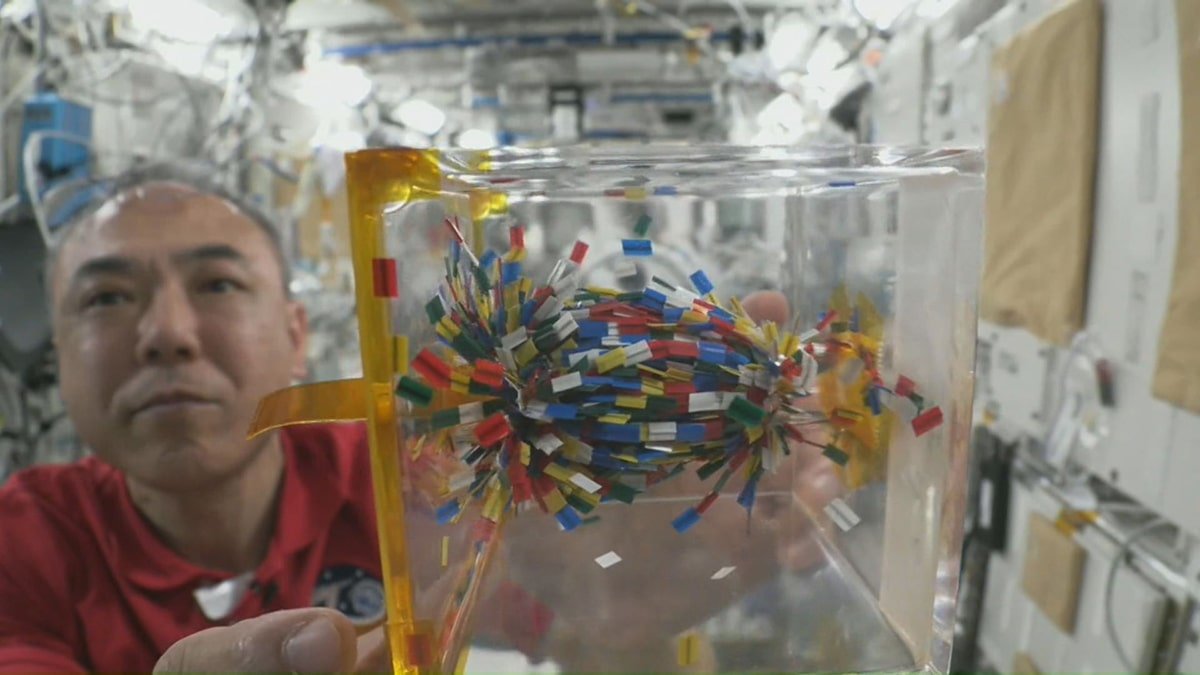
6. Magnus Glider Looping Phase in Microgravity (Singapore)
In this experiment, the proposer observed the flight trajectory of a Magnus glider in a microgravity environment by changing the number of rubber band wraps and the flying angle. When the Magnus Glider was rotated parallel to the direction of travel, a strong lift force was generated, and the glider was observed to rise unsteadily. When the Magnus Glider was rotated downward, it ascended in a circular arc, but it may have stayed near the ISS ceiling during the loop. The proposer clarified areas for improvement in this experiment, such as the initial velocity of the Magnus Glider and the cup size, for the next experiment.
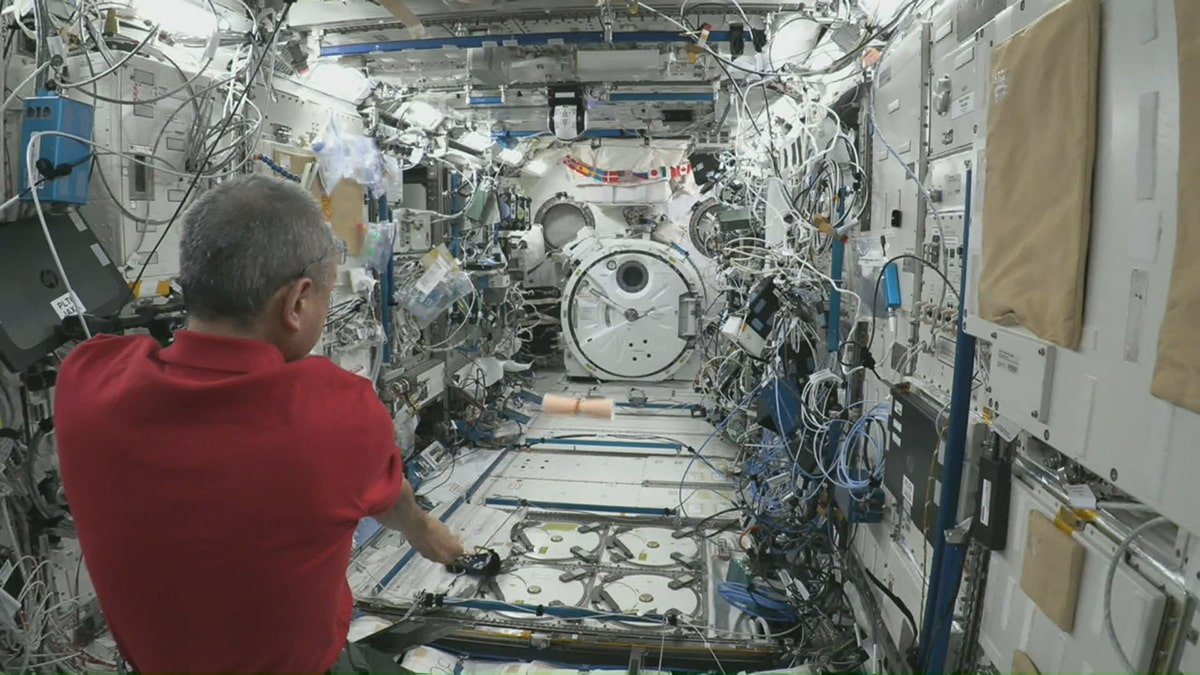
7. Behaviors of the Magnus Effect in Zero-Gravity (Taiwan)
The same as the Singapore team mentioned above, the proposer team proposed an experiment to fly a Magnus glider with conditions set on the number of rubber band wraps and the angle at which the glider was flown. The proposer stated that when the Magnus glider was rotated downward, the trajectory was a fusion of the peak trajectory and the curve trajectory observed when flying a Magnus glider on the ground. Furthermore, the proposer team considered that the Magnus effect (a phenomenon in which a rotating body in a fluid is subjected to a lift force) does not occur due to the influence of microgravity.
This on-orbit experiment was conducted in collaboration with the "Magnus Glider Looping Phase in Microgravity" experiment described above.
This on-orbit experiment was conducted in collaboration with the "Magnus Glider Looping Phase in Microgravity" experiment described above.

8. Water Spheres and Electrostatic Force (Thailand)
This was an experiment to observe the changes that occur to a water sphere when a ruler charged with static electricity is moved closer to or farther away from the water sphere in an orbit. During the experiment, the proposer observed the water sphere being pulled away from the water bag by the charged ruler, and the entire surface of the water ball being pulled by the electrostatic force. The proposer attributed this phenomenon to the fact that the electric field in the water sphere is almost uniform, and the entire water sphere was affected by the electrostatic force. The proposer also reported that he observed a phenomenon that is difficult to observe on the ground through experiments in a microgravity environment.
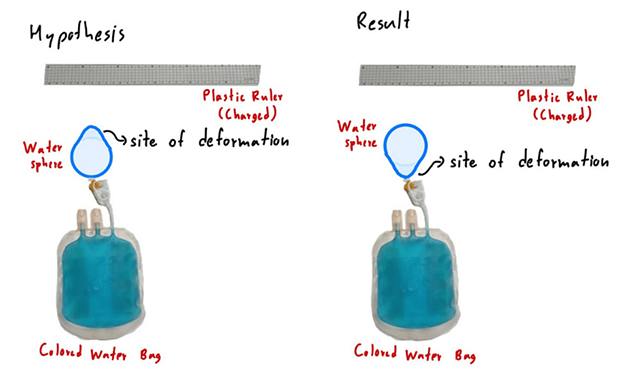
9. Oloid's Movement in Microgravity (Philippines)
Three separate experiments were conducted with an object called an Oloid on an orbit: (1) Throwing the object without rotation while it was floating, (2) Throwing the object while it was rotating, and (3) Throwing the object while it was rotating on the rack surface. In the first case, when the Oloid was thrown without rotation while it was floating, it moved in a straight line without rotation. Next, when the Oloid was thrown by rotating it while it was floating, it was observed to rotate continuously. Finally, when the Oloid was rolled on the rack surface, it rotated upward. Based on the results of the three experiments under different conditions, the proposer considered that the motion of an object's mass at its center changes in a microgravity environment, which is different from its motion on the ground.
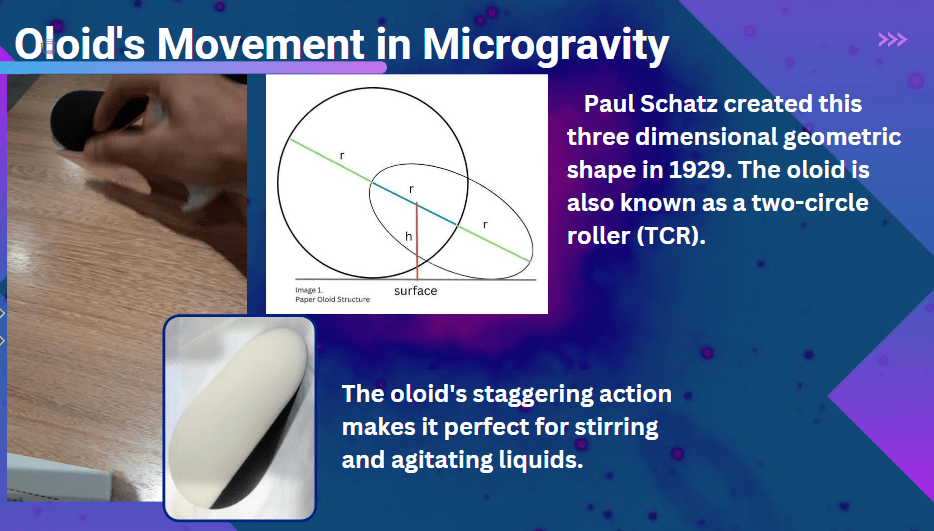
10. Acceleration of Liquid Surface in Capillary Action in Microgravity (Japan)
The proposer team placed a capillary in a container filled with colored water and tested whether the capillary phenomenon can be observed in a microgravity environment. In the on-orbit experiment, three capillaries with different diameters were used, and differences in the rate of rise of the water level in each were observed. On the ground, the thinner the capillary, the easier it was to suck up the liquid, whereas in a microgravity environment, the medium-thin (6 mm) capillary had the fastest rate of rise of the liquid level, followed by the thinnest (3 mm) and thickest (8 mm) capillaries. The difference between the results expected by the proposer and those obtained on the ISS, based on the drop tower experiment that was the starting point of the proposal, was due to the difference between the microgravity conditions on the ISS and the drop tower environment on the ground. The proposer team concluded that it is necessary to adopt more accurate experimental procedures.

11. Zero-G Siphon (Singapore)
The experiment was conducted to observe the behavior of colored water when a straw was inserted into a container filled with colored water and another straw was placed perpendicular to the first straw and blown into the container. Immediately after blowing into the straw, the colored water was not pulled up but instead was observed to overflow from the container. When the astronaut changed an angle of the straw, the colored water in the other straw was drawn up. However, the colored water was not observed to be drawn up to the outside of the top of the straw, which the proposers expected. Based on these results, the proposer concluded that the angle and strength of the blow are important factors in drawing up colored water, and that water is not drawn up continuously as in the case of the siphon principle.
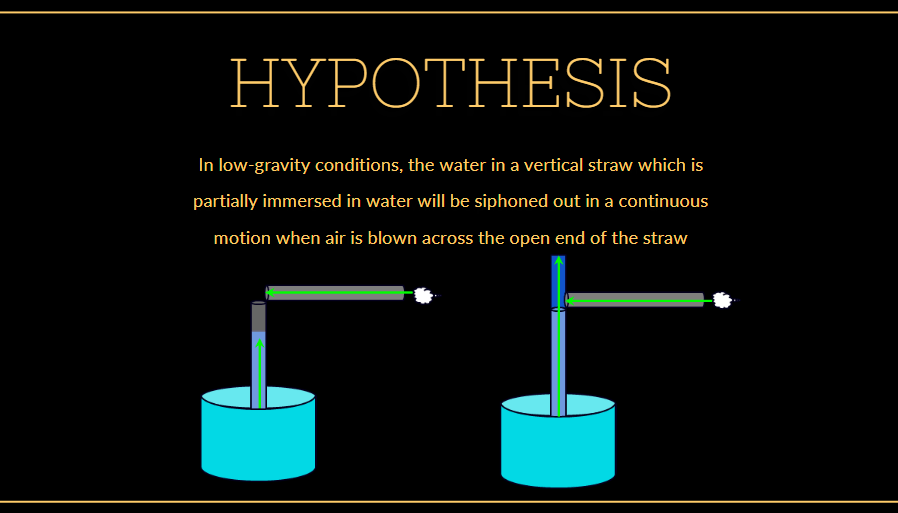
Category B:Exercises
12. Let Us Blow (Taiwan)
In this exercise, the astronauts held pipes of different diameters (3 cm and 1 cm) and a straw (5 mm) in their mouths and kept blowing out their breath. It was possible to see how their body movements and directions changed as the diameter of the air outlet changed. Contrary to the proposer's expectation that the movement would become larger as the diameter of the pipe decreased, the pipe of the smallest diameter caused the smallest rotation of the astronaut's body in this exercise. The proposer focused on the mechanism of laminal flow through comparisons of the on-orbit and on-ground conditions. The smaller the diameter of the pipe, the more friction between the inner surface of the pipe and the flow of the breath that was blown into the pipe may have had a significant effect. The proposer is looking into optimizing the bore diameter and the material of the pipe used for more effective implementation of the exercise.
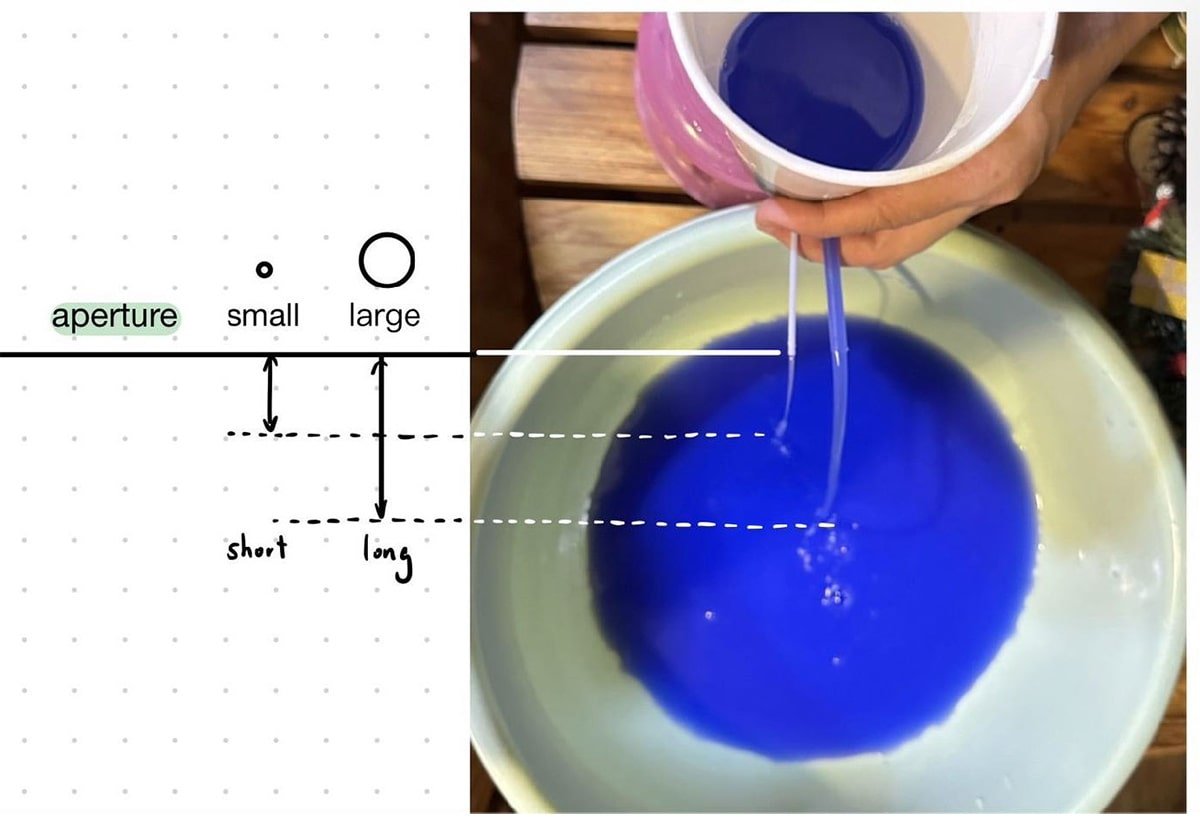
13. Flexibility Exercises with Rope (Japan)
This exercise involved string circling around the body in a microgravity environment while changing the length of a single string held in both hands. Astronaut FURUKAWA successfully circled the string around his body in the following order on orbit: under both legs, behind his back, over his head, and in front of his body. Astronaut FURUKAWA succeeded with 35 cm on orbit, which was more than the 50 cm that the proposer had expected. The proposer proposed three additional exercises that are expected to improve body flexibility in a microgravity environment, relieve back pain and stiff shoulders, and promote metabolism.
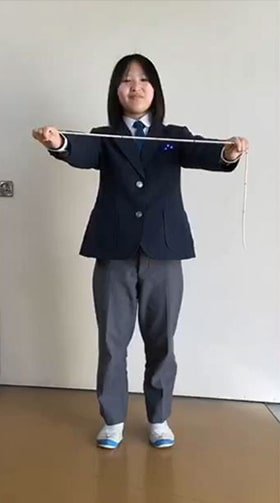
14. The Effectivity of Elastic Resistance Band Exercise When Performed in Zero-Gravity (Philippines)
With both legs secured to the handrails installed in the ISS, three types of squatting and stretching exercises using rubber bands were performed. The proposer considered that increasing the load intensity of the rubber band would help prevent the load reduction that occurs in a microgravity environment. In addition, the proposer proposed new exercises to stabilize posture and prevent muscle atrophy by incorporating isometric contraction exercises and other exercises that activate muscles, and by focusing on core exercises.
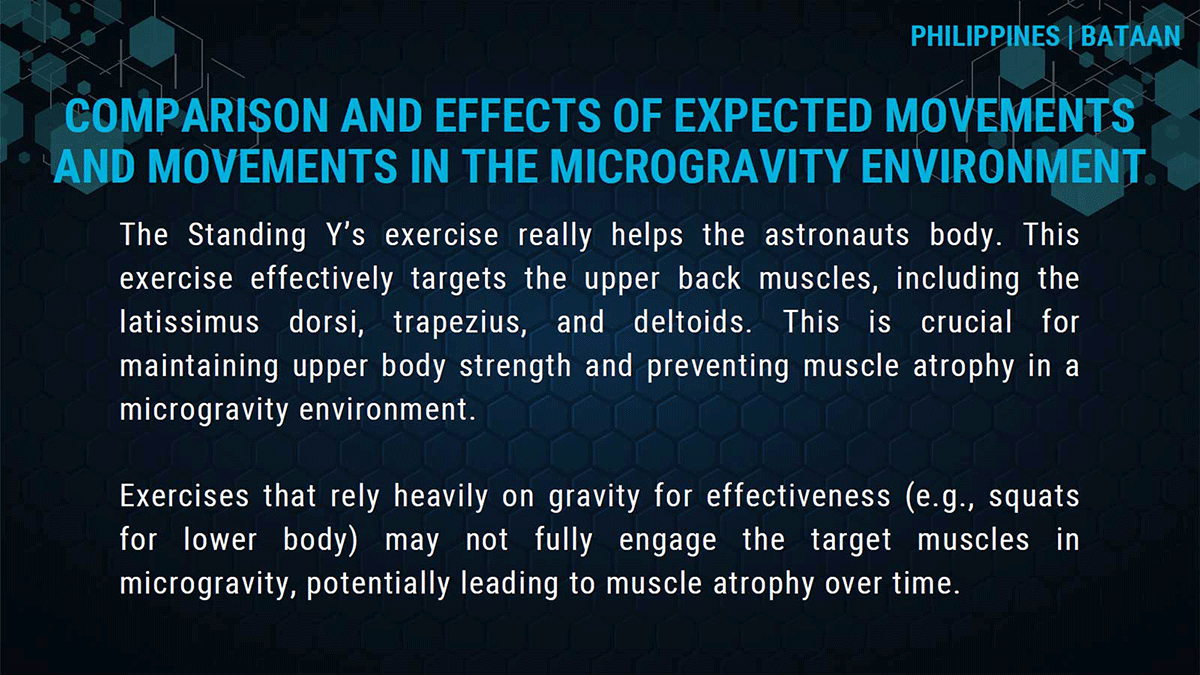
15. Starfish Exercise for Microgravity (Thailand)
With one elastic band between both legs and one band on one leg and one hand (for both arms and legs), the exercises involved raising the arms and spreading the legs apart. Astronaut FURUKAWA, who performed the exercise on orbit, commented that the exercise was suitable for strengthening triceps, deltoids, and other muscles. The proposer pointed out that the rubber band slid up when moving the legs and did not approach the entire leg muscles as an area for improvement, and proposed a new way to attach the band so that the band would not slide up and the exercise would be performed differently.
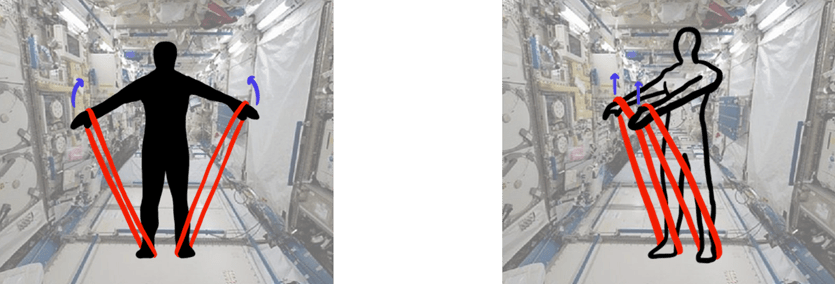
16. Rubber Gymnastics on Air Chair (Japan)
Three different types of exercises were performed using rubber bands. The exercise is performed on the ground in a chair, whereas in orbit, the exercises were performed in an air chair-like position with the legs fixed in place, without a chair. Two of the three exercises could be performed with only one rubber band and proved to be effective while on orbit as arm strength exercises. In the third exercise, the astronaut was in the air chair with one leg fixed to the handrail and the other leg spread 90°. On orbit, the body rotates as the legs are spread, so the astronaut used muscles he normally does not use on the ground to stabilize his body. To prevent this rotation, the proposer has suggested a new exercise in which the astronaut performs the exercise while gripping the handrail with his hands.
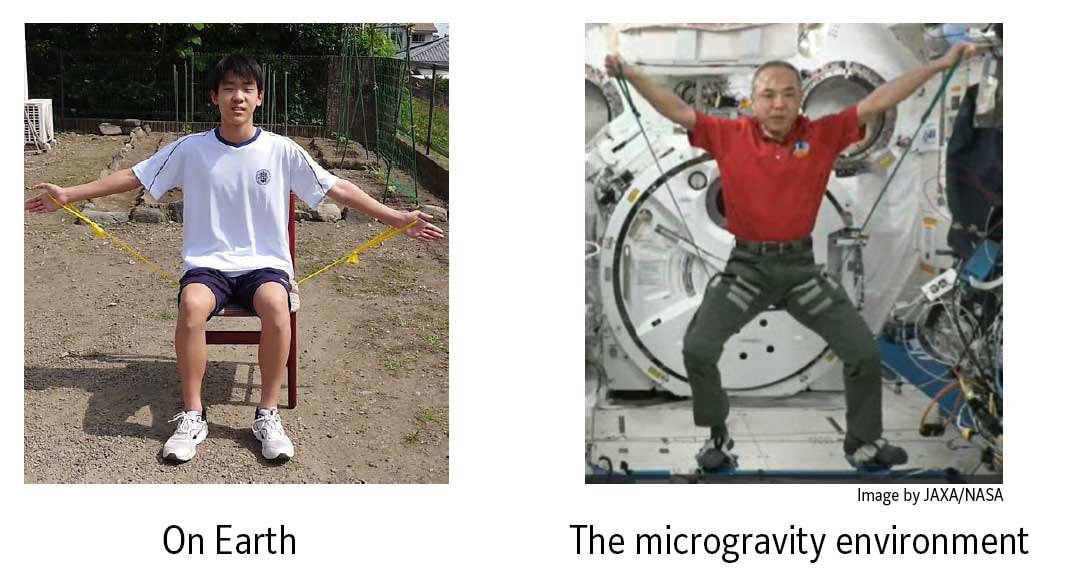
Award Ceremony
After strict scoring by the judges from Kibo-ABC participating countries/region, awards were given to the best presentations in each category. The Kibo-ABC Award was presented by Dr. Gay Jane P. Perez of the Philippine Space Agency on behalf of Kibo-ABC initiative. "Finding the Shape of Magnetic Field Lines (Bangladesh)" for Category A and "Starfish Exercise for Microgravity (Thailand)", and "Rubber Gymnastics on Air Chair (Japan)" for Category B were selected. Those two themes for Category B were scored tied by the judges and won the Kibo-ABC Award together.
In "Finding the Shape of Magnetic Field Lines (Bangladesh)", the judges commented that the clear objectives of the experiment were stated, and the process of visualizing magnetic field lines by making good use of the microgravity environment was very interesting.
In the "Starfish Exercise for Microgravity (Thailand)", the participants commented that the discussion based on the findings from the exercises was excellent, and the presentation was concise and easy to understand. In "Rubber Gymnastics on Air Chair (Japan)", there was a comment that the comparison of the effect of exercise on the ground and the ISS was excellent.
The Crew Award was selected by Astronaut FURUKAWA, who conducted the experiments and exercises in orbit and was awarded to "Water Spheres and Electrostatic Force (Thailand)". Astronaut FURUKAWA stated, "The effective observation of the relationship between water and static electricity and the discussion of the shape change of the water ball based on the results of the experiment were excellent.”
In "Finding the Shape of Magnetic Field Lines (Bangladesh)", the judges commented that the clear objectives of the experiment were stated, and the process of visualizing magnetic field lines by making good use of the microgravity environment was very interesting.
In the "Starfish Exercise for Microgravity (Thailand)", the participants commented that the discussion based on the findings from the exercises was excellent, and the presentation was concise and easy to understand. In "Rubber Gymnastics on Air Chair (Japan)", there was a comment that the comparison of the effect of exercise on the ground and the ISS was excellent.
The Crew Award was selected by Astronaut FURUKAWA, who conducted the experiments and exercises in orbit and was awarded to "Water Spheres and Electrostatic Force (Thailand)". Astronaut FURUKAWA stated, "The effective observation of the relationship between water and static electricity and the discussion of the shape change of the water ball based on the results of the experiment were excellent.”





Closing Remarks
The closing ceremony was followed by comments from the winning teams of the Kibo-ABC Award and Crew Award, respectively, and closing remarks by Astronaut FURUKAWA.
Astronaut FURUKAWA expressed his respect and appreciation for the participants' efforts so far and proposed experimental ideas out of box. He also noted that it may have been very difficult for many of the participants to present in English because English is not their native language. He then told the participants that English plays an important role in communication and that they may have felt that they had grown through their presentations in English. In closing, he said, "I am proud of all of you who have grown through this program. If you keep working hard, your dreams will come true." Astronaut FURUKAWA closed the ATZ-G 2023 Wrap-Up Session with these passionate words: "I would like to express my respect for your hard work. Thank you for proposing ideas with flexible thinking. After the on-orbit demonstration session, for some of you the results were as hypothesized. While for others, they might happen contrary to the hypotheses. You made every effort to elucidate the mechanism behind these practices’ discrepancies and today’s presentations were well put together. For many of you English might not be your mother tongue, and I know it is very challenging to make presentations in English. However, English plays an important role in communication. And I’m sure that you realized that you have grown through it. I’m proud of you and keep up the good work and I hope your dreams will come true."
Astronaut FURUKAWA expressed his respect and appreciation for the participants' efforts so far and proposed experimental ideas out of box. He also noted that it may have been very difficult for many of the participants to present in English because English is not their native language. He then told the participants that English plays an important role in communication and that they may have felt that they had grown through their presentations in English. In closing, he said, "I am proud of all of you who have grown through this program. If you keep working hard, your dreams will come true." Astronaut FURUKAWA closed the ATZ-G 2023 Wrap-Up Session with these passionate words: "I would like to express my respect for your hard work. Thank you for proposing ideas with flexible thinking. After the on-orbit demonstration session, for some of you the results were as hypothesized. While for others, they might happen contrary to the hypotheses. You made every effort to elucidate the mechanism behind these practices’ discrepancies and today’s presentations were well put together. For many of you English might not be your mother tongue, and I know it is very challenging to make presentations in English. However, English plays an important role in communication. And I’m sure that you realized that you have grown through it. I’m proud of you and keep up the good work and I hope your dreams will come true."

Acknowledgments
Thank all the space agencies/organizations in the participating countries/region that helped us to organize this event, and all the participants who applied for ATZ-G 2023 and made the event a success. The following comments are from student participants: “I'm so delighted and really appreciate this opportunity. It is a memorable experience of my life,” and ”I was happy to have the opportunity to listen to presentations from people from various countries, which was a valuable experience.” Asian Try Zero-G staff hope that what the students have learned and experienced through this event will benefit students in the future.
Asian Try Zero-G staff look forward to seeing their applications again and others at the next ATZ-G!
Asian Try Zero-G staff look forward to seeing their applications again and others at the next ATZ-G!
Unless specified otherwise, rights to all images belong to ©JAXA




